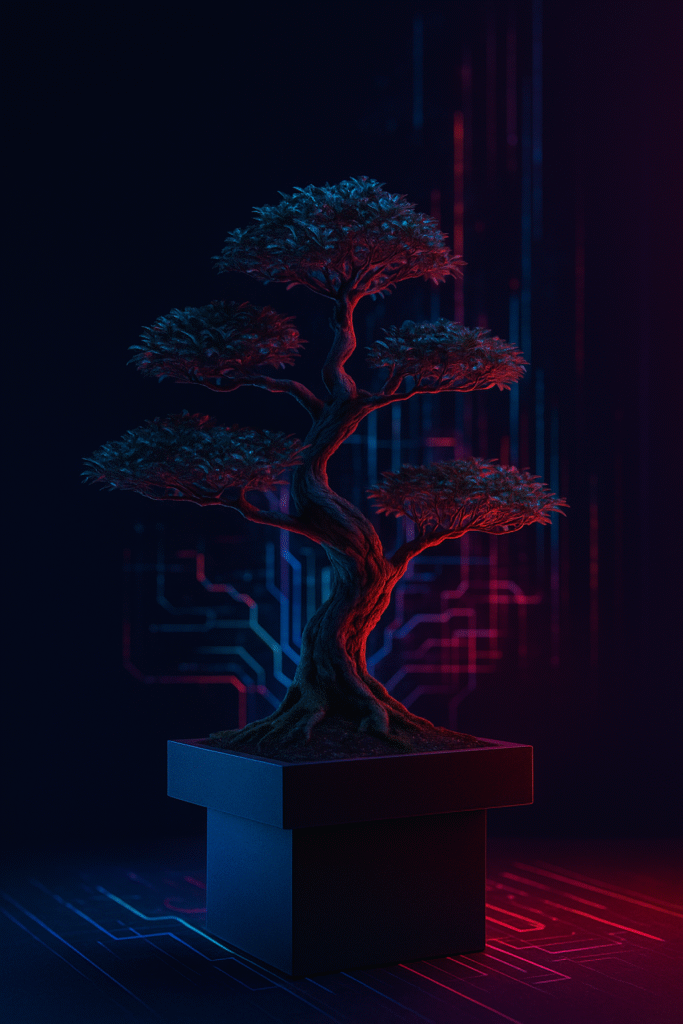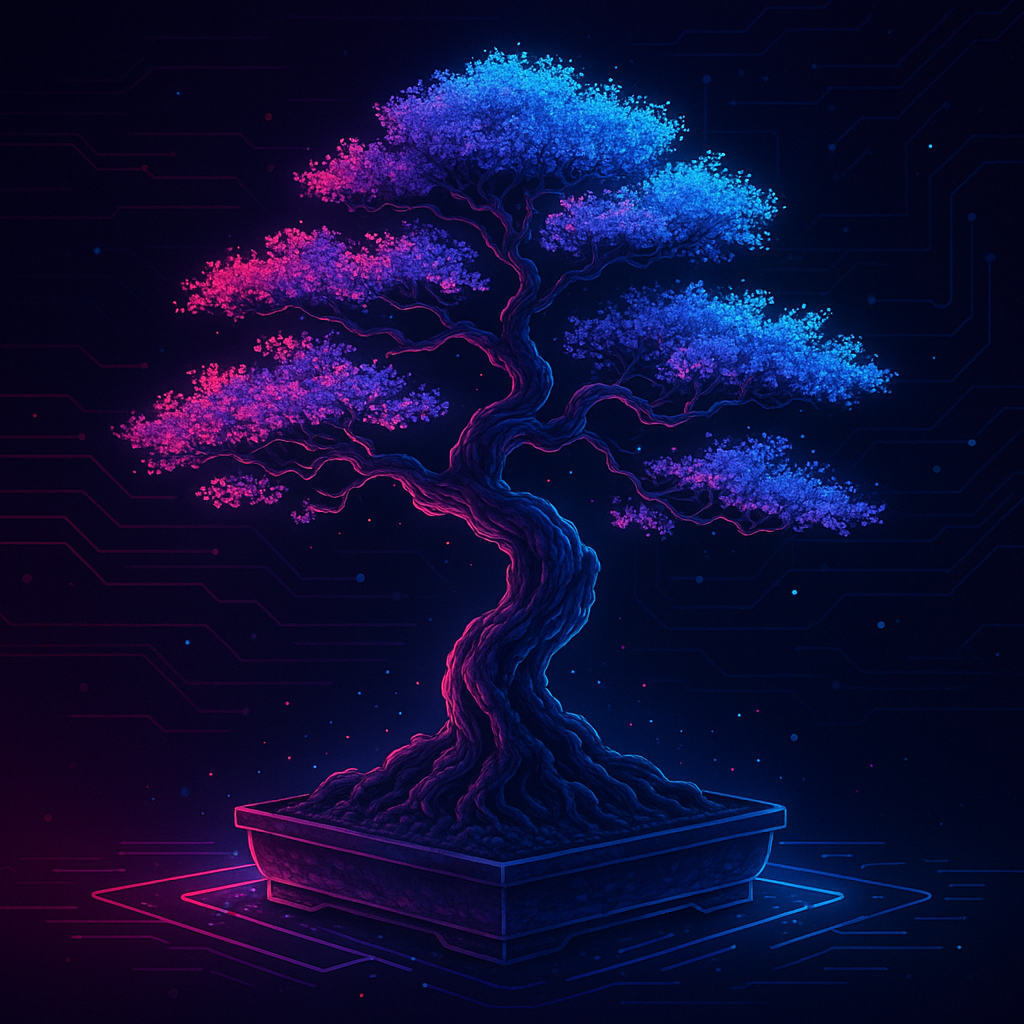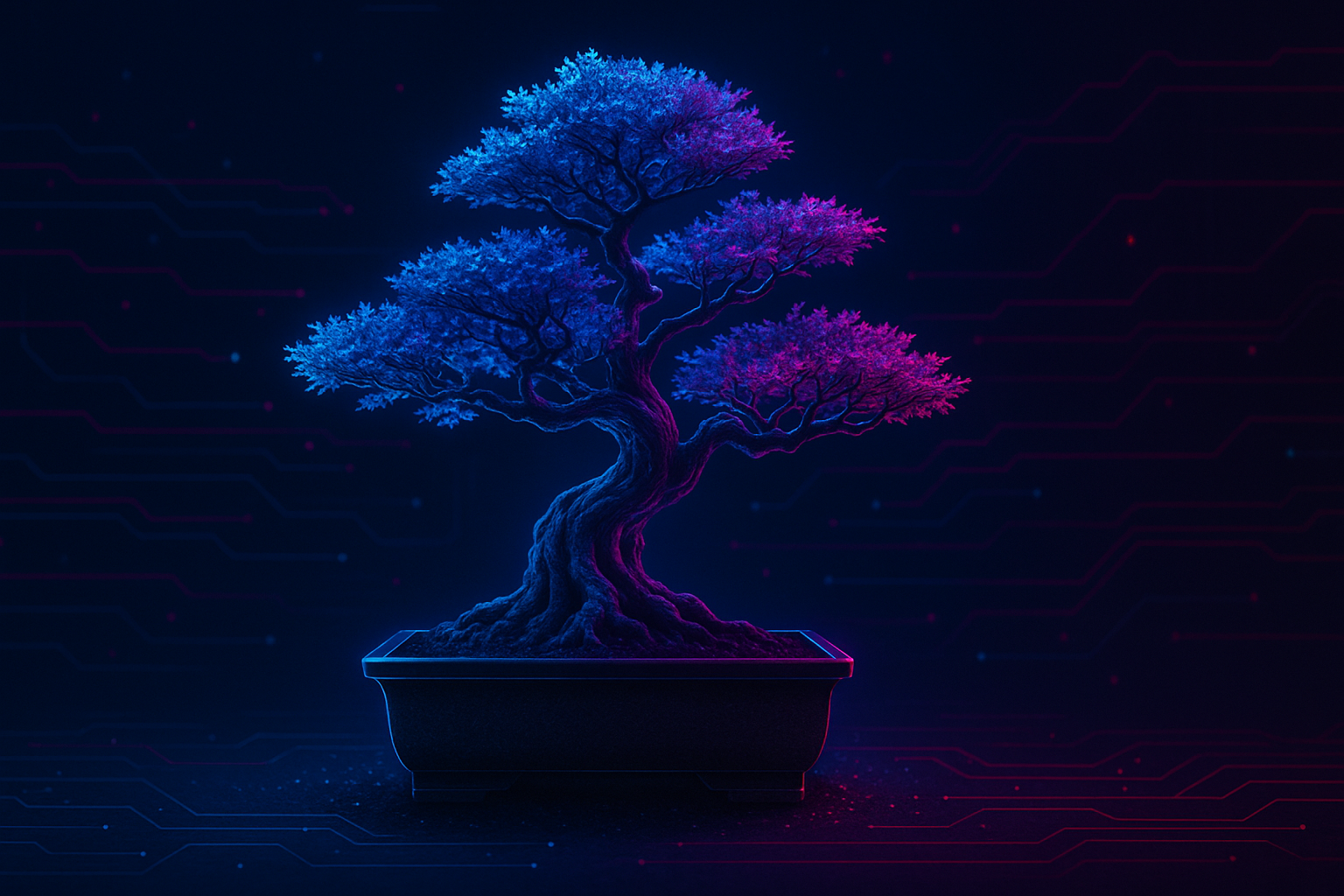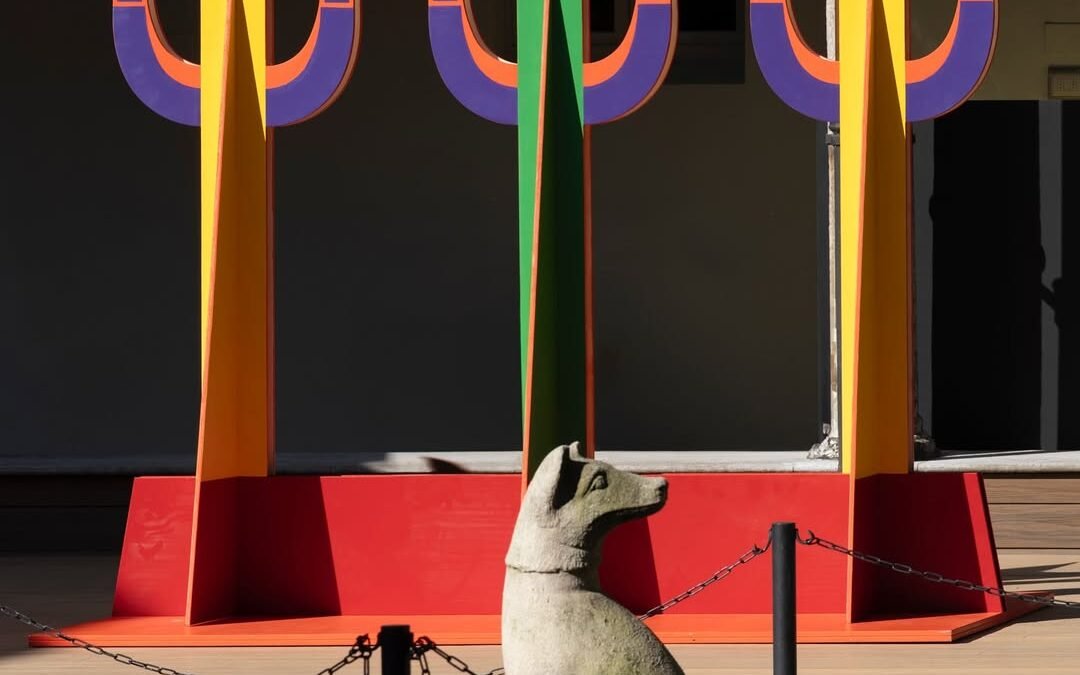In a world ruled by code and light, the bonsai reappears—not as a living tree, but as an algorithmic metaphor.
Artists and designers are reprogramming nature’s patience into a digital rhythm, where growth, pruning, and imperfection become acts of technological contemplation.
From living trees to virtual landscapes
The ancient practice of bonsai—once rooted in soil, seasons, and silence—has migrated into the digital realm. Today, 3D artists and creative coders sculpt virtual bonsais with the same devotion as gardeners once did with wire and blade. Rendered in engines like Unreal or Blender, these miniature worlds breathe through particles, shaders, and simulated gravity. Their branches grow through loops of code, while digital moss thrives in the logic of random noise.
Far from nostalgic mimicry, these works reinterpret bonsai’s essence: the coexistence of control and chaos. The digital gardener doesn’t fight nature—they design its parameters.

Zen meets pixels: the meditative screen
Across social platforms and virtual exhibitions, digital bonsais have become a visual mantra. Infinite loops of growing branches and color gradients evoke calm in a world of overstimulation. Generative artists use AI to create endlessly evolving bonsais that never bloom the same way twice—translating centuries of Japanese philosophy into computational language.
These animations are not decorative. They are slow, deliberate meditations—an antidote to the scroll, an act of stillness within motion.
Organic design in synthetic systems
In the vocabulary of interface and architecture, “bonsai” has become shorthand for organic balance within systems. Designers borrow its structure to express control over complexity: modularity, hierarchy, minimalism. From web layouts to AI decision trees, the logic of pruning—removing excess, leaving only essence—guides how digital systems evolve.
Some generative designers even use “growth algorithms” modeled on botanical logic. These code-based organisms visualize data like ecosystems: branching networks, self-similar geometries, recursive forms. The bonsai becomes both metaphor and method.
When technology names itself after nature
It’s no coincidence that Bonsai is also the name of Microsoft’s AI platform and a robotics company developing machine vision for agriculture. In both cases, the term evokes a controlled intelligence—cultivated, not chaotic. The digital bonsai stands as a symbol of precision and patience in technological design, a reminder that even in artificial growth, balance matters.
One example of this intersection can be seen in projects that combine living aesthetics with digital environments, as explored in this contemporary installation, where organic forms meet algorithmic motion.

A symbol reborn for the cyber age
The digital bonsai bridges worlds: organic and synthetic, ancient and futuristic. It encapsulates a philosophy of creation through limitation—a mirror of how algorithms shape meaning through constraint. Its roots may no longer touch soil, but its branches still reach toward something timeless: the search for harmony amid transformation.
As digital artists continue to cultivate these luminous ecosystems, the bonsai’s miniature universe expands into new dimensions—one pixel, one branch, one line of code at a time.
Read more about how technology reshapes visual culture at RGB Wave’s virals section.





